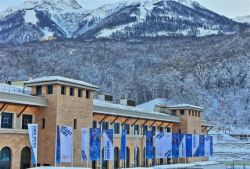From Agreitner to Zoeggeler, statistics of the 113 Azzurri
 There will be 113 Azzurri at the Sochi 2014 Winter Olympic Games. Four more than in Vancouver 2010, although the fields have increased by twelve units and the qualification criteria has been greatly modified by the International Federations. It has not been since Nagano 1998 (114, but there was a hockey team) that Italy has registered so many athletes in an Olympic games abroad (Torino 2006 can not count as the host nation was Italy and legally qualified for all sports). In Sochi Italy failed to qualify in only two sports: Ice hockey and curling, as had already happened before in Vancouver. The oldest member of the team will be Giorgio Di Centa who has just turned 41, and also the youngest comes from the Italian Winter Sports Federation and is the luger Sandra Robatscher, who turned 18 last month.
There will be 113 Azzurri at the Sochi 2014 Winter Olympic Games. Four more than in Vancouver 2010, although the fields have increased by twelve units and the qualification criteria has been greatly modified by the International Federations. It has not been since Nagano 1998 (114, but there was a hockey team) that Italy has registered so many athletes in an Olympic games abroad (Torino 2006 can not count as the host nation was Italy and legally qualified for all sports). In Sochi Italy failed to qualify in only two sports: Ice hockey and curling, as had already happened before in Vancouver. The oldest member of the team will be Giorgio Di Centa who has just turned 41, and also the youngest comes from the Italian Winter Sports Federation and is the luger Sandra Robatscher, who turned 18 last month. While there are no minors in the team, the average age of the Italia team in Sochi has dropped compared to previous recent games, mainly due to the women. This time, the average age is 26.06, almost a year less than in Vancouver (when it was 26.86). In order to find a lower average age we have to go back to Salt Lake City in 2002 where there was a team with an average age of 25.99 (almost a few months younger than the current one). Whereas the difference with Vancouver for the men is minimal (27.31 compared to 27.51 this time four years ago), the difference is more notable in the women's field. In Russia, we will have an average age of 24.81 (the lowest in the last twenty years, in Lillehammer in 1994 it was 23.61) significantly younger than that of Canada (26.22).
The Region which is always represented the most is that of Trentino Alto Adige (60 athletes), with the province of Bolzano maintaining the lead with 48 athletes and the Province of Trento (12 units) being exceeded again by Lombardy which has 21 athletes. The Italian regions represented increased from 9 to 10, while only 5 were born outside Italy (4.4%), one more than in Vancouver. Lastly, the female percentage level increases (44 women athletes compared to 69 men) in the team (38.93% against 36.36% in the consignment in Canada)".









